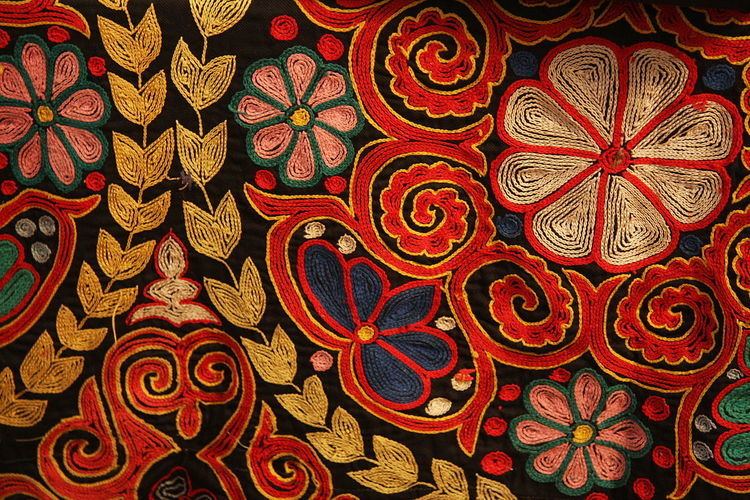 | ||
Chain stitch is a sewing and embroidery technique in which a series of looped stitches form a chain-like pattern. Chain stitch is an ancient craft – examples of surviving Chinese chain stitch embroidery worked in silk thread have been dated to the Warring States period (5th – 3rd century BC). Handmade chain stitch embroidery does not require that the needle pass through more than one layer of fabric. For this reason the stitch is an effective surface embellishment near seams on finished fabric. Because chain stitches can form flowing, curved lines, they are used in many surface embroidery styles that mimic "drawing" in thread.
Contents
Chain stitches are also used in making tambour lace, needlelace, macramé and crochet.
History
The earliest archaeological evidence of chain stitch embroidery dates from 1100 BC in China. Excavated from royal tombs, the embroidery was made using threads of silk. Chain stitch embroidery has also been found dating to the Warring States period. Chain stitch designs spread to Iran through the Silk Road.
Hand embroidery
Chain stitch and its variations are fundamental to embroidery traditions of many cultures, including Kashmiri numdahs, Iranian Resht work, Central Asian suzani, Hungarian Kalotaszeg "written embroidery", Jacobean embroidery, and crewelwork.
Machine sewing and embroidery
Chain stitch was the stitch used by early sewing machines; however, as it is easily unravelled from fabric, this was soon replaced with the more secure lockstitch. This ease of unraveling of the single-thread chain stitch, more specifically known as ISO 4915:1991 stitch 101, continues to be exploited for industrial purposes in the closure of bags for bulk products.
Machine embroidery in chain stitch, often in traditional hand-worked crewel designs, is found on curtains, bed linens, and upholstery fabrics.
Hand variants
Variations of the basic chain stitch include:
